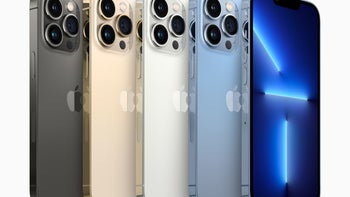Apple explains how to decide how much storage you need on your next iPhone

When purchasing a new phone, do you have trouble deciding how much storage you need? Or do you just decide to buy the largest amount of storage available for the model you are getting. This is usually a huge waste of money unless you absolutely need the 512GB-1TB of capacity available on flagship phones these days.
Apple Support suggests how to determine how much storage you need for your new iPhone
Last October we told you about a rumor which called for Apple to offer iPhone 14 units in 2022 with as much as 2TB of NAND flash storage aboard. Most likely, this amount of storage capacity would be made available only on the iPhone 14 Pro line. Currently, the largest storage capacity available on an iPhone is the 1TB available on the iPhone 13 Pro and iPhone 13 Pro Max with storage topping out at 512GB for the non-Pro models.


Trying to be helpful, Apple Support released a video on Friday titled "How to choose your iPhone storage capacity." Apple says, "If you’re getting a new iPhone, you can find out which storage capacity is best for you by checking how much storage you’re currently using." Hey, this actually makes sense. If you know how much storage is on your phone now, you can probably determine if you'd be better off with less storage, more storage, or the same amount.
We should also note that if you are a phone enthusiast, you probably already know how much storage you have on your handset. If you got here via a Google Search, welcome, and let's continue. This is not going to be difficult. On your iPhone, go to Settings > General > iPhone Storage. On the top of the screen you'll see how much storage you have used and the total amount available to you.
You'll also see a breakdown of the types of files you are filing your iPhone up with. For example, using the color coding on the iPhone Storage measurement tool, you can quickly see if your handset is filled with apps, photos, videos, mail, and messages. The Apple representative says in the video, "If you're nearing your limit, you'll want to consider an iPhone with larger capacity."
Knowing your current storage capacity can help you decide how much you need for your next iPhone
If you have plenty of unused space, Apple suggests that your next iPhone have similar storage capacity to the one that you're currently using. Please note that Apple doesn't say to buy a phone with smaller storage capacity in that situation. That actually might be wise counsel rather than a money grab by Apple because getting caught with too much additional storage isn't the same as getting caught without enough storage.
Some responses on YouTube were interesting including one that noted you should always look at future storage needs instead of current needs. As this person pointed out, with improvements to the camera in every model, you're bound to be taking better photos and videos that will require additional storage to save.
Of course, iPhone users can always use iCloud for storage. When you sign up for iCloud you get 5GB of free storage. In the U.S., you can buy 50GB of iCloud+ storage for 99 cents per month, $2.99 per month for 200GB of iCloud+ storage, and $9.99 per month for 2TB of storage. Keep in mind that iCloud does not add storage to your handset.
Storage capacity has come a long way for both the iPhone and the industry in general. When the OG iPhone was released in 2007, it was first available with only 4GB and 8GB of storage. Apple eventually added a 16GB option. The iPhone 4s in 2011 was the first iPhone with as much as 64GB of storage available. The iPhone 6 line, launched in 2014, was the first to offer 128GB of storage.
Two years later, in 2016, Apple introduced 256GB storage capacity on the iPhone 7 line. This doubled to 512GB with 2018's iPhone XS and iPhone XS Max. And the iPhone 13 Pro line was the first to feature up to 1TB of storage capacity. Since Apple seems to double its top storage option every two years, we might not see 2TB in storage capacity made available to iPhone users until next year's iPhone 15.










Things that are NOT allowed: